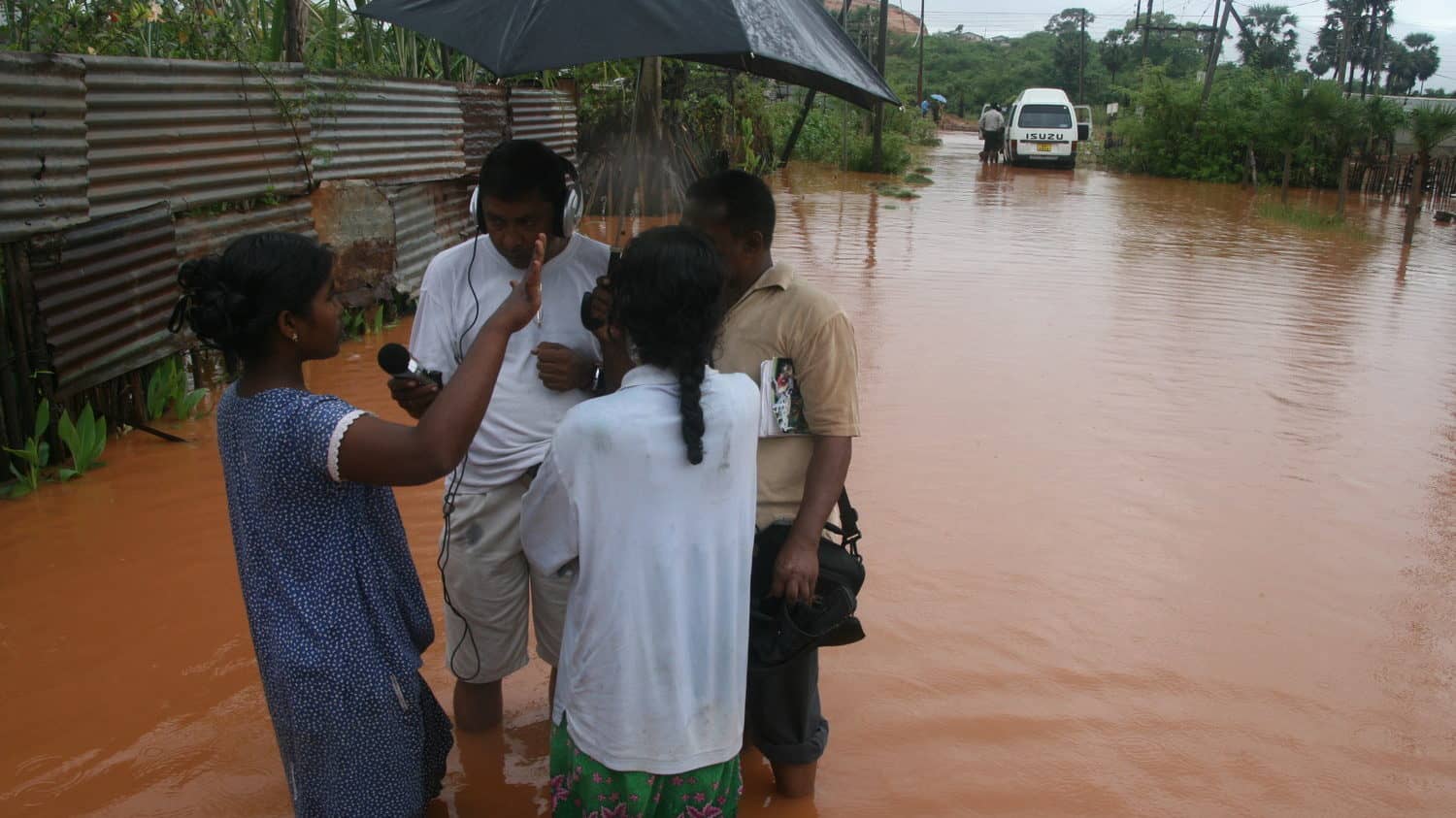
Following the devastation of the December 26 tsunami, USAID / OTI / DAI Sri Lanka awarded Internews a grant for the Sri Lanka Relief Radio (SLRR) project. In three months, SLRR produced 98 programs to provide comprehensive coverage of issues affecting tsunami-damaged areas. The program emphasizes the voices and experiences of communities themselves and it was aired on the Sri Lanka Broadcasting Commission Monday to Friday, on the national Sinhala and Tamil service.
Internews established two mobile production units and in the same time giving a total of 14 trainees intensive hands-on coaching and experience in field production techniques. By combining stories from different regions into one program with nation-wide distribution, addressing tsunami relief issues from the perspective of local communities, and including field production techniques to create dynamic and informative reports, Kiran has provided the most comprehensive programming available on national media for information and debate on the tsunami reconstruction.
“There are a lot of media outlets in Sri Lanka. Everyone talks about politics, sports, and so on. But no one gives information about post-tsunami activities. Only RVR does this. More of this is needed.”
Listener of the Internews RVR program
IMPACT
- Raising the voices of tsunami-affected communities – Over the full six month period of implementation, SLRR has made a clear contribution to raising the voices of tsunami-affected communities in the national media. It has also provided models and experiences which form a useful reference for efforts to boost Sri Lanka’s regional media coverage.
- Media Capacity – The stories covered by RVR during six months are an example of effective journalistic field production. During the project, 11 journalists received intensive on the job practical training in researching, gathering, and producing stories in the field and 41 CBOs received training in radio production techniques, and experience in producing stories in the field that focused on local areas of concern.
- Community Engagement – According to almost 80% of the listeners, RVR provided the most comprehensive coverage of post-tsunami reconstruction issues as experienced by communities on the ground. It affirmed the voices and needs of those communities. The value of this has been emphasized time and again in listener group discussions and in ad-hoc interaction with the public by MPU team members working in the field.
- Communication with Communities – For participating journalists and CBO members, SLRR provided a rare, and in most cases sustained opportunity, to engage in-depth with local issues and to develop the research, technical, and formatting skills necessary to effectively communicate those stories to a broad national audience.